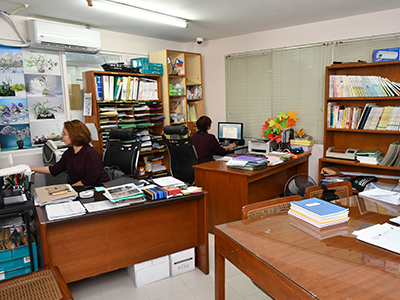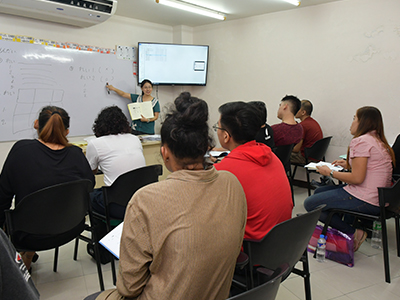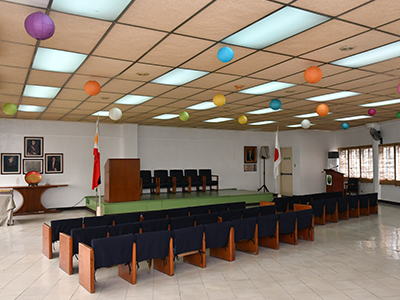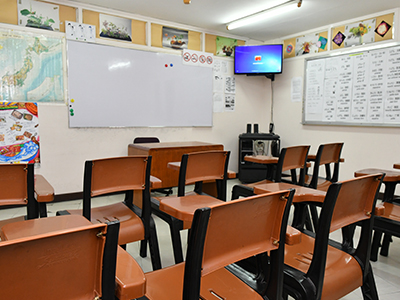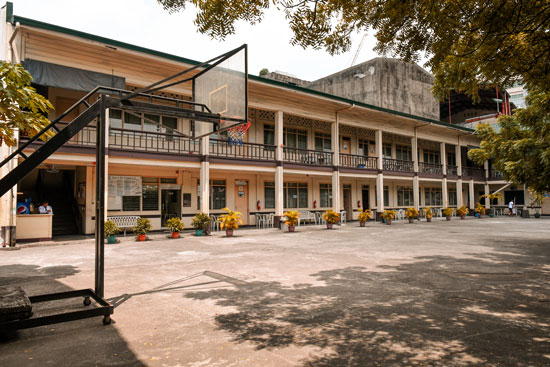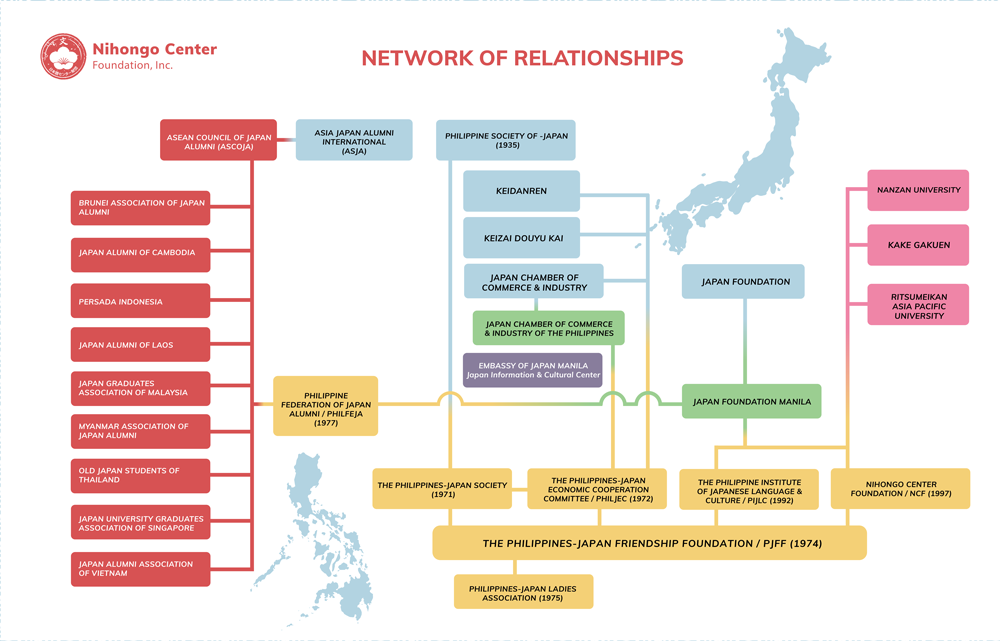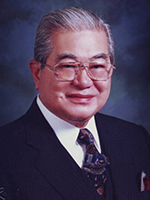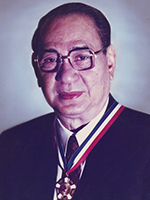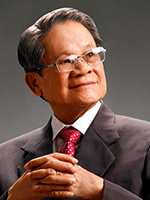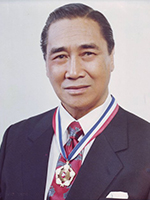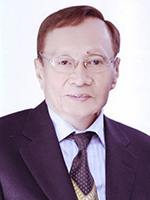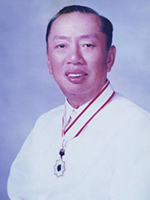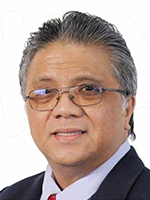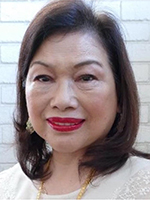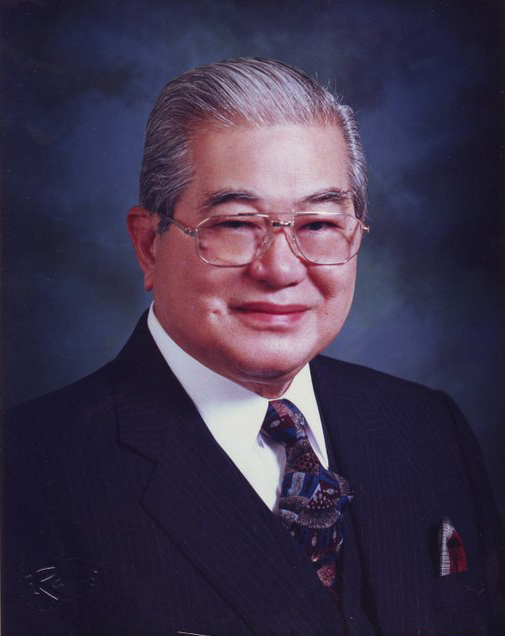
ホセ・ラウレル三世
Jose S. Laurel III – Dai-Dai Senpai
Founder, The Philippine Institute of Japanese Language & Culture and The Nihongo Center Foundation
VISION
NCF is the preeminent center for comprehensive and culturally immersive Japanese language programs which helps fulfill the aspirations of the Philippines and Japan to dramatically expand bilateral relations and deepen people-to- people understanding and friendship.
MISSION
NCF operates Japanese language programs that develop Nihongo proficiency and deepen the understanding of Japanese culture for professional advancement and lifelong learning for the Filipino.
CORE VALUES
INTEGRITY
We always conduct our affairs with honor, truthfulness and reliability because we have a legacy to continue bequeathed by Filipino advocates of friendly relations with Japan.
DEDICATION TO CRAFT
We are committed to teach Nihongo and Japanese culture to students who pursue personal and professional advancement which promote understanding, friendship and partnership with Japan.
PROGRAM EXCELLENCE
We continue to innovate and enhance our teaching methods and learning environment to acquire Nihongo proficiency which is essential to communicate well with Japanese friends, associates and partners.
Our History
PIJLC History
In mid-1992, encouraged by its Chairman, the former Philippine Ambassador to Japan, JOSE S. LAUREL III, the Philippines-Japan Friendship Foundation, Inc. (PJFF) established the PHILIPPINE INSTITUTE OF JAPANESE LANGUAGE & CULTURE FOUNDATION, INC. (PIJLC). Its purpose was clear and singular-to provide Filipinos with a full-time, intensive preparatory course on the Japanese language (Nihongo) designed to provide its students with the proficiency needed to qualify for admission into Japanese schools and universities. Himself a former ryugakusei (foreign student) to Japan Ambassador Laurel and fellow- former ryugakusei share a common experience: that Nihongo itself is a formidable barrier to learning and acquiring a Japanese education. At the core of this barrier is the usage of a system of Chinese characters (Kanji) numbering around 2,000 which all ryugakusei must master in order to pursue an academic objective in Japan.
As non-ethnic Chinese, Filipinos studying in Japan variably suffer a great disadvantage vis-a-vis countries where Chinese is the predominant mother tongue–such as China, Taiwan, and Hongkong. The inability of even our brightest Filipino students to read and write Chinese characters translates into a unique, significant handicap for Filipino students in Japan.
The PIJLC was therefore established to provide effective and solid Nihongo training for future Filipino ryuugakusei to Japan. It recognizes the fact that the increasing number of Japan graduates from our Southeast Asian neighbors has resulted in a comparative advantage over the Philippines in the fields of business, economic, cooperation, research and development, science, technology and cultural exchange.
The PIJLC believes that there is a need to promote Japanese education among Filipinos, and that central to this need is a formidable language barrier.
Currently, PIJLC offers intermediate courses, JLPT N2 & N1 review classes, translation courses, and translation & interpretation services.
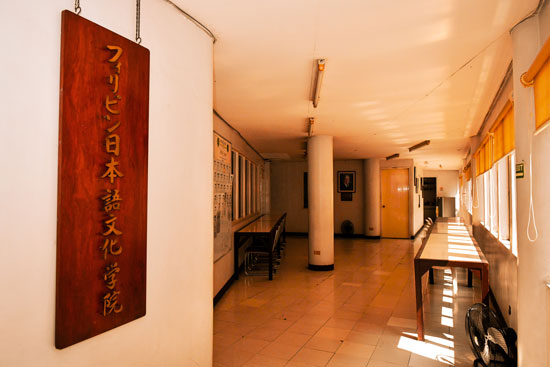
フィリピン日本語文化学院(PIJLC)は、1992年、元駐日フィリピン大使ホセ・S・ラウレル三世が理事長を務める比日友子財団(PJFF)によって設立されました。その設立目的は、フィリピン人に全日制の集中日本語教育を施すことにより、日本の高等教育機関に入学できるだけの日本語力を付けさせることであります。 ラウレル元大使自身かつて日本に留学したことがあり、他の留学生と同様、日本で教育を受けるには日本語習得という困難な壁を克服しなければならない、ということを痛感していました。その困難さの核にあるのが漢字であり、日本で学ぶには2000以上の漢字を習得しなければなりません。
漢字の習得は、中国、台湾、香港といった漢字圏からの留学生やシンガポール、インドネシア、タイから派遣される中国系の留学生にとっては、大きな障害となりません。 ところが、非中国系であるフィリピン人にとっては、大きなハンディとなっているのです。 どんなに優秀なフィリピン人にとっても漢字の読み書きは難しく、これが日本に留学する際の重大な障害となっています。
そこで、日本留学を希望するフィリピン人に、しっかりとした日本語予備教育を施すために、本学院が設立されました。他の東南アジア諸国に目をやれば、日本の高等教育機関に留学した者が経済、商業、科学技術、研究開発、国際協力等の分野において活躍しており、この点においてフィリピンは遅れをとっています。 だからこそ、日本に留学するフィリピン人を増やす必要性があり、そのためには日本語習得という困難な壁を克服する必要があるのです。
現在PIJLCでは、中級コース、日本語能力試験N2 / N1受験対策クラス、翻訳コースを開講してい ます。また、翻訳・通訳業務も行なっています。

NCF History
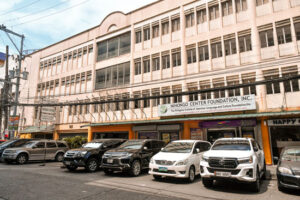
The transfer of the Embassy of Japan from Makati to its new chancery in Roxas Boulevard brought an end to the 28-year existence of the Nihongo Gakko (Japanese Language School). Since its establishment in 1969, the Japan Information and Cultural Center (JICC) supervised the Nihongo Gakko. It grew from a one-classroom affair to what had become one of the major facilities for Japanese language training in the Philippines. By March 1997 when the Makati classes had to be suspended due to the transfer of the Embassy, the JICC-Nihongo Gakko had taught over 16,000 students with an average of 600 students enrolled each year.
That the JICC-Nihonggo Gakko could not be physically accommodated in the new chancery was clear to all. But neither was a simple closure tenable, after a 28-year legacy of teaching Japanese language to Filipinos of all ages and different walks of life.
The task of bequeathing the Nihongo Gakko to a worthy recipient thus fell on the shoulders of the then outgoing JICC Director, Susumu Tanaka. In his words, Tanaka-shocho poetically described his mission: To ready the Nihongo School as a bride, for the best groom a parent could wish for his daughter. After a careful selection process, the JICC eventually requested the Philippines-Japan Friendship Foundation, Inc. (PJFF) to continue its work of promoting Nihongo education in the Philippines, this time, under Filipino management, control and direction.
Ambassador Jose S. Laurel III, assisted by Ambassador Benjamin F. Sanvictores (Chairman & Exec. Trustee respectively of the PJFF), conceptualized the nature of motivation behind the procedure for the bequeathal of the Nihongo Gakko to the PJFF. First of all, Ambassador Laurel made it clear that in accepting from the JICC the reins over the Nihongo Gakko, the PJFF did not have self-serving commercial or business interests to promote.
In fact, as the prime mover behind the Philippines Institute of Japanese Language & Culture (PIJLC) – established in 1992 – the PJFF already had a language training project. Mr. Tanaka countered that the excellent management record of the PIJLC was precisely a major reason for choosing the PJFF as the transferee of the Nihongo Gakko’s operations.
Secondly, Ambassador Laurel agreed that the time was ripe to convey the Nihongo Gakko to a Filipino group; that this is the only way the institution can really expand and develop along the needs of Filipinos for training in Nihongo.
Thirdly, Ambassador Laurel said that, as an act of friendship and in recognition of the close working relationship between the Philippines-Japan Society and the JICC, the PJFF would do all it could to cooperate with and be of assistance to the JICC in this most important task of continuing the work of the Nihongo Gakko.
He said that it is the PJFF’s honor to be entrusted with the responsibility of continuing the operations of the Nihongo Gakko. Ultimately, the PJFF organized the Nihongo Center Foundation, Inc. (NCF) – the corporate Nihongo Gakko and received as donation the considerable collection of Japanese language textbooks, reference materials, audio-visual and other teaching facilities.
1997年に日本大使館がマカティからロハス大通りに移転し、大使館付属日本語学校は28年に及ぶ歴史を閉じることになりました。同校は1969年、日本大使館広報文化センター(JICC)の監督のもとに教室ひとつで出発し、次第に発展を遂げフィリピンで最大の日本語教育機関になりました。1969年に開講されてから大使館移転にともない閉鎖されるまでにこの学校で学んだ延べ人数は1万6千名に達し、年平均の在籍者数は600名以上でした。日本語学校を大使館移転先に設置することは不可能でしたが、あらゆる年齢・階層のフィリピン人を対象に28年間に亘って日本語教育を施してきた伝統ある同校を閉鎖してしまうのも避けたいことでした。
そこで日本語学校の受け入れ先を探す労を取ったのが、退任間近の田中JICC所長でした。所長ご自身の言葉を借りれば「日本語学校は私の娘であり、親として最高の婿を探してやりたい」とのことでした。慎重な婿探しの結果、白羽の矢を立てられたのが比日友好財団(PJFF)で、フィリピンにおける日本語教育普及事業がフィリピンの組織の指揮、監督のもとに運営されることになりました。
ホセ・S・ラウレル三世比日友好財団理事長は、ベンハミン・F・サンヴィクトレス 理事の助けを借りて、同財団が日本語学校を引き受けるに当たっての基本方針を決めました。まず第一に、理事長は同財団には商業的利益を得る考えは全くないことを明言しました。比日友好財団は1992年にフィリピン日本語文化学院(PIJLC)を設立し、日本語教育に携わっていましたが、田中日本大使館広報文化センター所長によれば、このPIJLCの運営の見事さこそが、同財団に白羽の矢を立てた理由だったそうです。第二に、ラウレル理事長は日本語学校の運営をフィリピン側に委ねる機が熟した判断しました。フィリピン側の手に委ねることこそが、フィリピン人のニーズに合った日本語教育を普及、発展させることになるという考えでした。第三に、比日友好財団が所属している比日協会と日本大使館広報文化センターの緊密な関係を考慮し、友情の証として、できる限りの協力をすると決意しました。比日友好財団としても、日本語学校運営という有意義な事業の責任を委ねられたのは名誉なことである、というのがラウレル理事長の考えでした。
こうした経緯を経て、比日友好財団は、日本語学校を引き継ぐ組織として、1997年に日本語センター財団(NCF)を設立しました。NCFは日本語学校の全教職員を引き受け、日本語教科書、参考書、視聴覚教材などの寄贈を受け、今日に至っています。
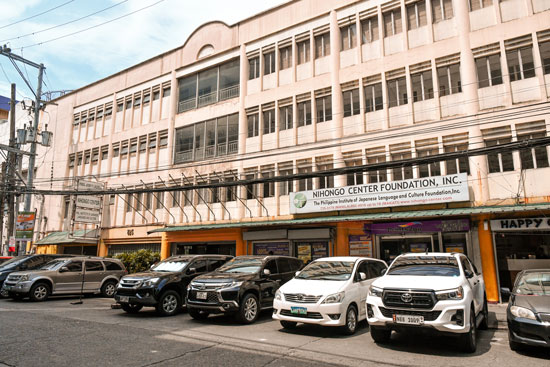
Board of Trustees
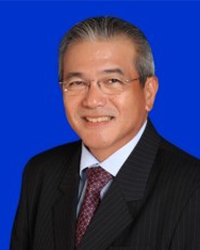
Mr. Francis C. Laurel
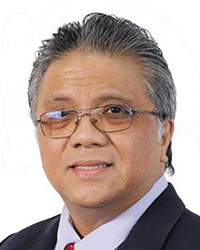
Mr. Philip B. Sanvictores
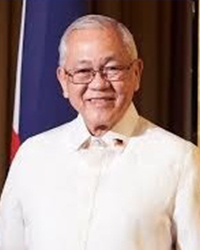
Amb. Jose C. Laurel V
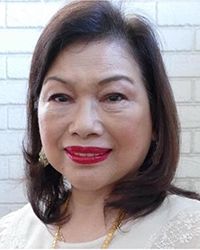
Ms. Ma. Elena Laurel-Loinaz
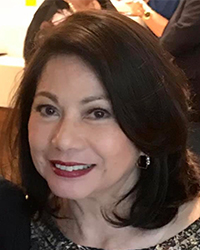
Ms. Mercedes Laurel-Marquez
Officers

Mr. Francis C. Laurel
Chairman

Mr. Philip B. Sanvictores
President

Ms. Ma. Elena Laurel-Loinaz
Treasurer
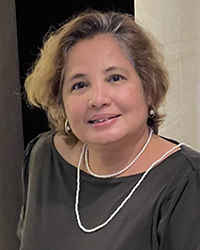
Ms. Glenda T. Ferma
Administrator/Corporate Secretary
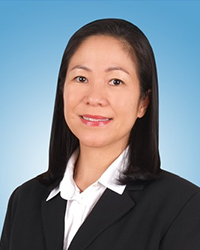
Ms. Isabel Laurel-Dimayuga
Deputy Administrator
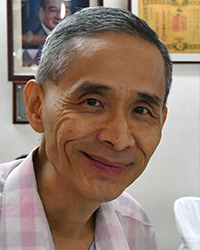
Prof. Kenjiro Ogata
Academic Advisor

Ms. Keli Biscarra
Faculty Development Manager
比日同窓会センター(PJAC)
マニラ寮
PJAC Dormitory
The Philippines-Japan Alumni Center (PJAC) Dormitory is located at 823 Sergio H. Loyola Street in Sampaloc, Manila – conveniently situated in the heart of the “University Belt”. The property is owned and operated by the Philippines-Japan Friendship Foundation (PJFF), the founder and principal benefactor of both the NCF and PIJLC.
Offering a wide range of lodging options, PJAC Dorm rooms that can accommodate as many as 200 boarders at any given time are configured for single, twin, four, six or eight person occupancies. All rooms are spacious and well-ventilated. It is a popular half-way residence for students and reviewers attending the numerous schools, colleges and universities in the area. It also houses students of NCF, especially the hundreds of nurse & care worker candidates undergoing intensive Nihongo training under the Japan-Philippines Economic Partnership Agreement (JPEPA).

